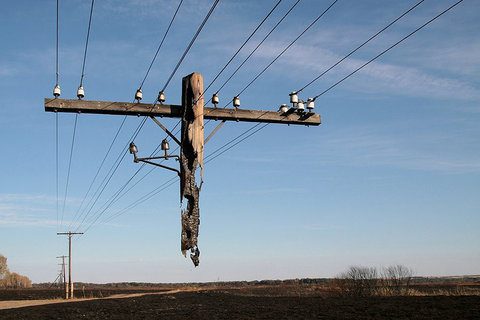South Australians were spared further rolling blackouts on Thursday night after the Australian Energy Market Operator belatedly directed the country’s most efficient gas plant to switch on its second unit and provide power to the people in the midst of a major heatwave.
The 240MW Pelican Point unit was left idle on Wednesday night, leaving the state short of power and forcing the operator to cut power to 90,000 customers.
On Thursday, it was told in the afternoon to switch on to avoid more outages. It did so within 30 minutes. Apparently, it was ready to roll, even though it chose not to bid into the market itself, despite wholesale electricity prices soaring to the market cap.
The Clean Energy Council is pointing out that this is a management issue, not a renewables one.
It will likely be some time before we discover the the real reasons why AEMO didn’t bother to ask Pelican Point to switch on on Wednesday and decided on forced outages instead, or why Pelican Point continues to sit on the sidelines when its parent company’s customers (Engie owns Simply Energy) are being denied power.
However, it should be noted that Pelican Point was not the only gas plant that failed to deliver on Wednesday. AGL, which has the most customers in South Australia, had one 120MW unit of its Torrens Island gas plant closed for “maintenance.”
It was operating on Monday and its capacity would have been enough to avoid any shortfall. And the 56MW gas plant at Port Lincoln, was also off-line, apparently due to “transmission” issues.
As we wrote on Thursday, this looks like a massive own goal by the industry – the generators, the retailers, the network owners, the operators and the regulators. Clearly, South Australia has had enough, and are sick of dealing with bad management and the ideological stupidity in Canberra.
The focus is now on coal-dependent NSW, where AEMO has warned of a 400MW plus deficit in the mid to late afternoon as that state faces its hottest ever 3-day period on record, with temperatures in suburban Sydney to hit 45C, and higher further inland.
Its issues may be complicated by the fact that Queensland is also facing a tight power supply and may not be able to help out. Tomago Smelter said it had been told it would have to reduce demand in mid-afternoon unless new supply could be found. It said it was outraged by the decision.
So much interest was generated in what is happening on the grid that the AEMO’s live data page crashed in the afternoon, unable to provide updates.
The newly appointed NSW energy minister Don Harwin urged customers to reduce their consumption, although he appeared confused about how: “Lower the temperature of your fridge,” he suggested on ABC TV on Thursday.
Er, that would have the opposite effect. At least the department came out with a few more useful tips later, such as putting the temperature control on the air-con to 26C.
Paul McArdle, at Watt Clarity, the providers of our excellent NEM-Watch widget (which a lot of people have been watching these last few days), says NSW is facing record demand on Friday.
The forecasts show 14,584MW at 16:30. This, says McArdle, would be very close to eclipsing the prior record of 14,649MW in February, 2011.
This is remarkable given that since that time, the Kurri Kurri smelter has closed, removing several hundred megawatts of demand, and another 800MW of solar PV (much of it consumed at home and not showing on grid demand figures).
NSW also faces shortages, remarkably, on Saturday. Queensland is also facing a tight-supply demand balance on Friday. With no large scale wind farms, and few solar plants, Queensland will rely on kerosene being burnt in plants such as Mt Stuart to help meet demand.
But at least the large amounts of rooftop solar PV means that – like South Australia – any blackout are unlikely to occur in the heat of the day, and will likely only occur in late afternoon.
The main interest will be to see how the Coalition spins the outages as the fault of wind power. But Malcolm Turnbull started earlier, telling a radio interviewer on Friday that outages in South Australia were “blackouts” but in NSW they would be known as “load shedding.”










